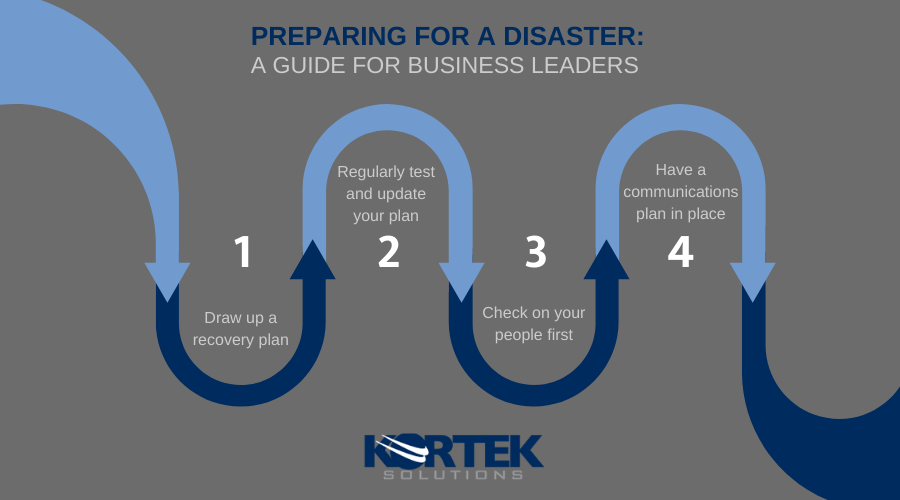Smart leadership is characterized by practical foresight, especially with regards to disasters and other events that are disruptive to business operations. Companies that stay longer in the game are the ones that weather the storms. They’re the ones who have carefully planned and allocated their resources for difficult situations.
When disasters strike, good leaders rise above the rest. And with ample preparation, you can be a good leader too. These tips will show you how:
Draw up a disaster response/recovery plan
Walking into a disastrous event woefully unprepared could only end up disastrously for everyone involved. Business leaders who have a habit of winging it may not be adequately prepared to handle worst-case scenarios. To avoid this, allot time and resources to develop a comprehensive disaster response and recovery plan (DRRP).
This first step is important because there is no one-size-fits-all solution to all types of disasters. For instance, you wouldn’t respond to a flood the same way you would to a fire. Having a disaster plan in place will also help you cope with the stresses in any eventuality. It is always better to have a plan drawn up ahead of time, rather than being forced to make life-or-death decisions on the fly.
Regularly test and update your DRRP
The state of data security is always evolving, so you can easily get left behind if your DRRP isn’t tested and updated regularly. Regular testing will help reveal gaps in the plan, while regular updates will ensure that your action plan stays abreast of technological, regulatory, and legal developments.
More importantly, testing your DRRP should help ensure that it’ll work when it’s needed the most. Updating your recovery plan will make sure your action plan doesn’t put you behind the competition or below the industry standard.
Is your business fully equipped to handle a disaster?
Most business owners know how crucial data is to their operations. What many don't know is how to implement a contingency plan that ensures their data can be restored quickly in case of a disaster and how to design recovery plans that are easy to execute. Talk to our experts to find out how.
Check on your people first
For some employees, the way you respond to and make decisions regarding a calamity determines whether you’re a good leader or not. Any executive’s first obligation in the event of the disaster will be his or her own staff’s safety and well-being. Without them, you won’t be able to restore operations expediently. So before you start worrying about restoring your systems, account for all your employees’ safety.
Have a communications plan in place
Don’t make the mistake of drawing up a DRRP without a corresponding communications plan. A communications plan should establish information routes and contingencies in the event of a disaster situation — in a worst-case scenario, not having one can mean failing to gather the correct information to make smart decisions.
This will also help you mitigate the spread of false information. A disaster is a lot to deal with on its own; having communications protocols in place to address your customers and investors will help a great deal in ensuring your brand reputation stays undamaged through a disaster event.
When designing your communications plan, designate point persons that your employees can rely on for instructions and advice. Also, lay out the communications devices and infrastructure you’ll need. Make room for worst-case scenarios, and if possible, provide your office space with the necessary communication tools that will work in such an extreme event.
Prepare your company for anything that may come its way with Kortek Solutions’ Business Continuity Planning solutions. Safeguard your business from any man-made or natural disaster. Contact us today to learn more.


